| Columns Retired Columns & Blogs |
Hi
Great review as always
just one question, you say xlr has (pin2+) but manuel says normal(pin2 -)
which one is correct?
Thank you
sincerely
Mahesh kc
I examined the Luxman DA-06's electrical performance with my Audio Precision SYS2722 system (see www.ap.com and the January 2008 "As We See It"). Unless stated otherwise, all measurements were performed from the DA-06's balanced outputs. I don't yet have files of DSD-encoded test signals, so the DA-06's measured performance was assessed with PCM-encoded files, with sample rates extending up to 384kHz.
The Luxman's performance via its USB port was tested using my 2012-vintage Apple MacBook Pro. Apple's USB Prober utility identified the Luxman as having the product string "USB D/A Converter DA-06" and manufacturer string "Luxman," and confirmed that the processor's USB input operated with the preferred isochronous asynchronous protocol. The AudioMIDI utility listed all sample rates from 32 to 384kHz as being possible via USB, with 24-bit word lengths. The TosLink inputs locked to datastreams with sample rates up to 96kHz; the coaxial and AES/EBU inputs operated successfully with datastreams up to 192kHz.
The Luxman's maximum output level at 1kHz was the same from the balanced and unbalanced outputs: 2.36V, or 1.43dB higher than the CD standard's 2V RMS. With the output polarity set to "2-P" with the front-panel button, the balanced output preserved absolute polarity (ie, was non-inverting), though the unbalanced output did invert polarity. With the output set to "3-P," the unbalanced output now preserved absolute polarity and the balanced output inverted it. The source impedance from the balanced output was close to the specified 600 ohms, at 590 ohms at low and middle frequencies, dropping slightly to 576 ohms at the top of the audioband. The unbalanced output impedance was half these values, as expected.
The DA-06 offers a choice of three reconstruction filters for PCM playback, labeled "P-1 (normal FIR filter)," "P-2 (low latency IIR filter)," and "P-3 (high attenuation FIR filter)." Figs. 1–3 show the impulse response for these three filters with 44.1kHz data. Figs. 1 and 3 indicate that P-1 and P-3 are similar linear-phase types, with symmetrical ringing around the impulse, though P-1 has fewer coefficients than P-3. P-2 (fig.2) is a minimum-phase type, with all the ringing occurring after the impulse. (This is similar to the filter used in Art Dudley's Halide DAC HD.) With the test suggested to me by MBL's JÅrgen Reis, filters P-1 and P-2 can be seen to have similarly slow ultrasonic rolloffs with 44.1kHz-sampled white noise (magenta and red traces in figs. 4 and 5, respectively), but with rather different top-band rejections. The image of a full-scale 19.1kHz tone at 25kHz is suppressed to only a moderate degree compared with filter P-3 (fig.6), which has a faster rate of rolloff.
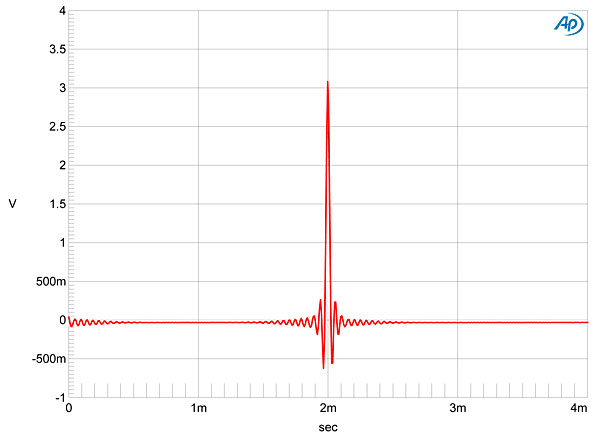
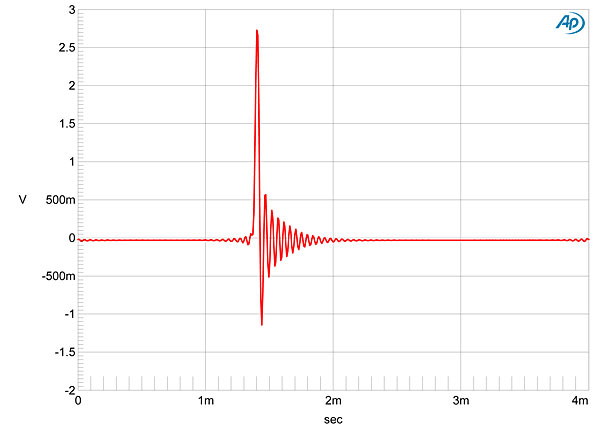
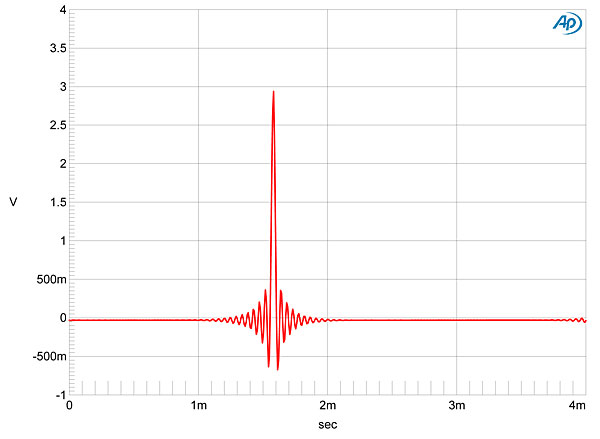
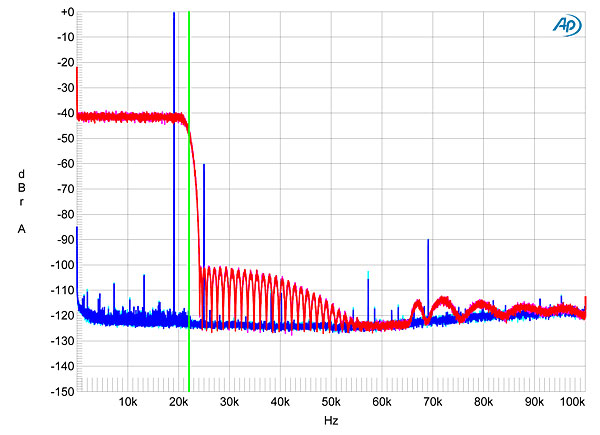
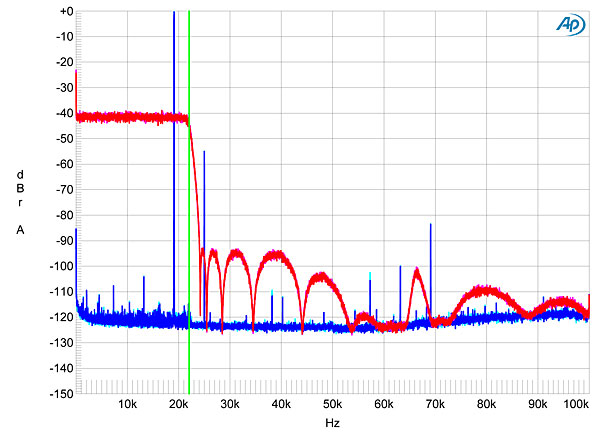
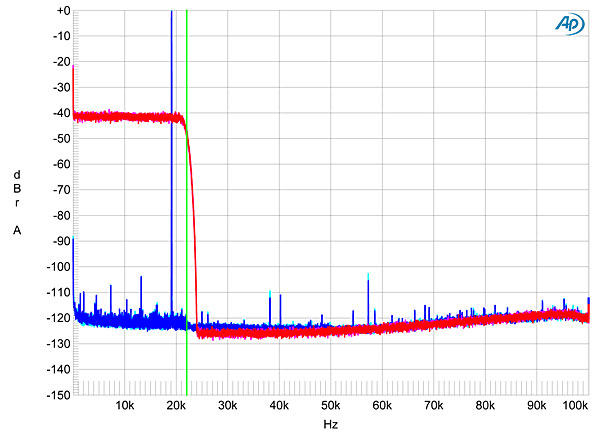
Fig.7 is a more conventional way of showing the DA-6's frequency response, taken with sample rates of 44.1, 96, 192, and 384kHz. The response with all four sample rates is down by 0.5dB at 20kHz, with then (other than the 384kHz traces) a sharp rolloff just before each Nyquist frequency (half the sample rate). There is superbly close matching between the two channels' output levels. Channel separation was also superb, at >125dB in both directions below 1kHz, and still 110dB (L–R) and 113dB (R–L) at 20kHz. The Luxman's low-frequency noise floor (fig.8) was commendably free from power-supply–related spuriae.
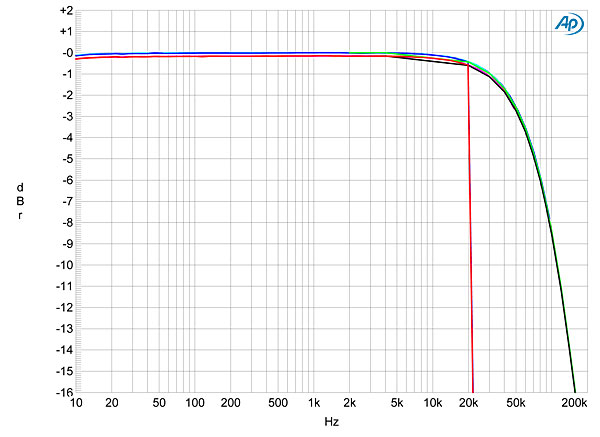
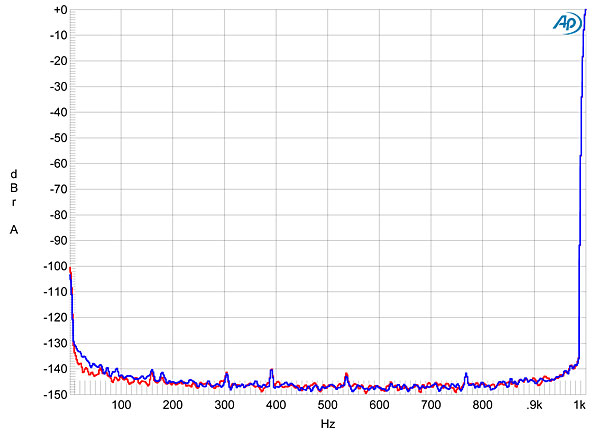
With a dithered 1kHz tone at –90dBFS, the spectral spike at 1kHz peaks at exactly –90dBFS (figs.9 & 10), while increasing the bit depth from 16 (cyan and magenta traces) to 24 (blue, red) drops the noise floor by almost 30dB, implying resolution of almost 21 bits, which is close to the state of the art for audio data. With this high resolution and low noise, the Luxman's reproduction of an undithered 16-bit tone at exactly –90.31dBFS (fig.11) was essentially perfect. The waveform is perfectly symmetrical, the Gibbs Phenomenon "ringing" on the tops and bottoms of the waveform is clearly evident (I used filter P-1 for this test), and the three DC voltage levels described by the data are well defined. The 25µV of DC offset seen in the right channel (red trace) is trivial. With undithered 24-bit data, the result is a well-formed sinewave (fig.12).
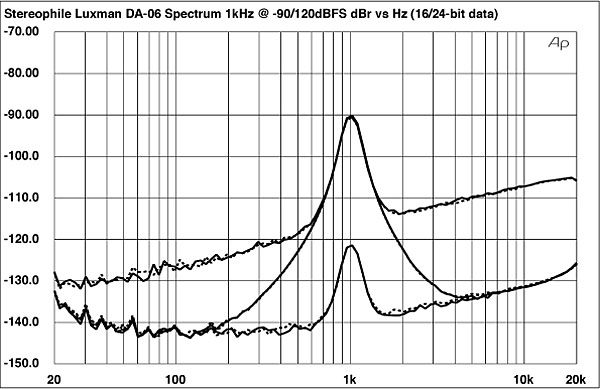
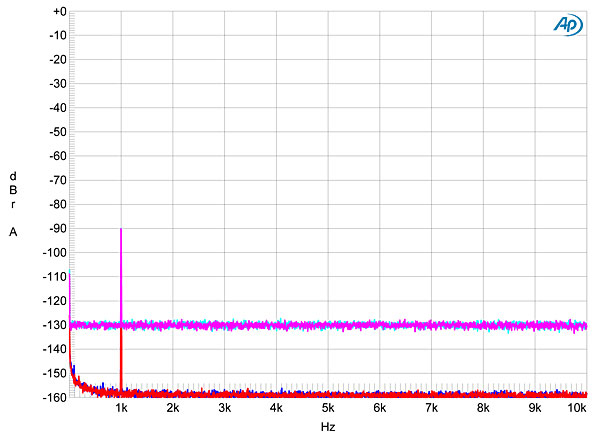
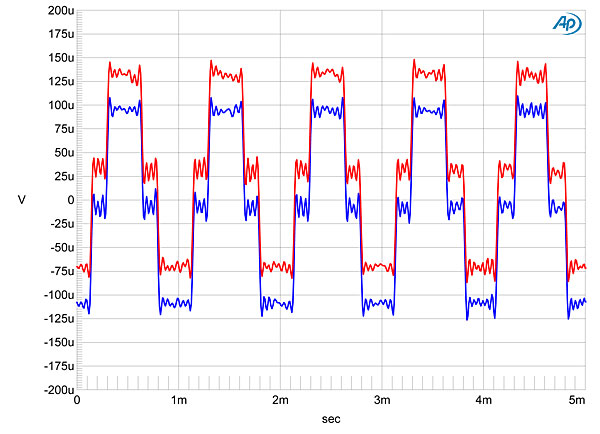
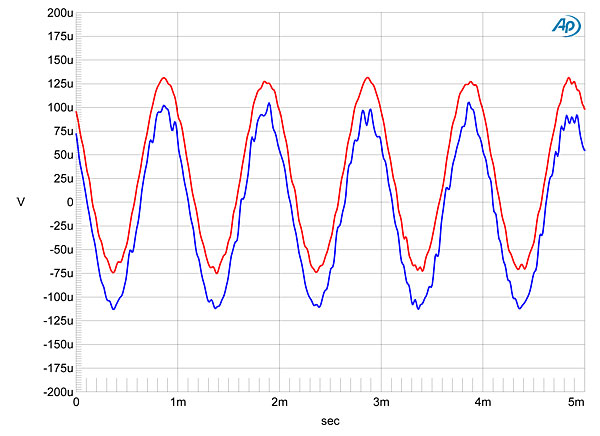
Harmonic distortion levels are low (fig.13), even into the very low 600 ohm load, and the second and third harmonics are the highest in level. These would be subjectively innocuous even if they were much higher in level than the –106dB (0.0005%) they are in the DA-06's output. Intermodulation distortion is also very low, with the 1kHz difference product produced by a full-scale mix of 19 and 20kHz tones lying at –110dB (0.0003%), as seen in fig.14. This graph was taken with filter P-2 and, as expected from fig.5, the ultrasonic images of the two primary tones are suppressed by just over 60dB. With the faster rollout of P-3, these images are attenuated by another 50dB (fig.15).
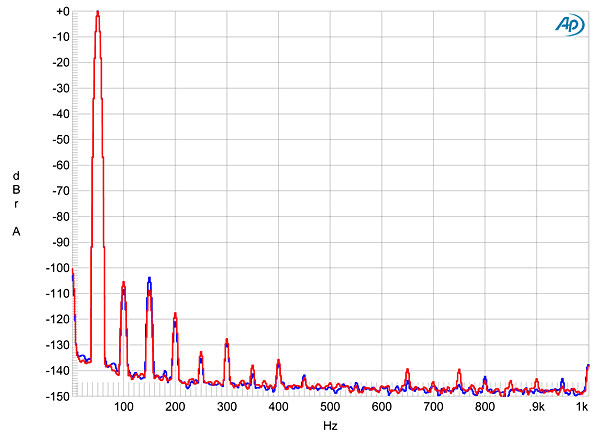
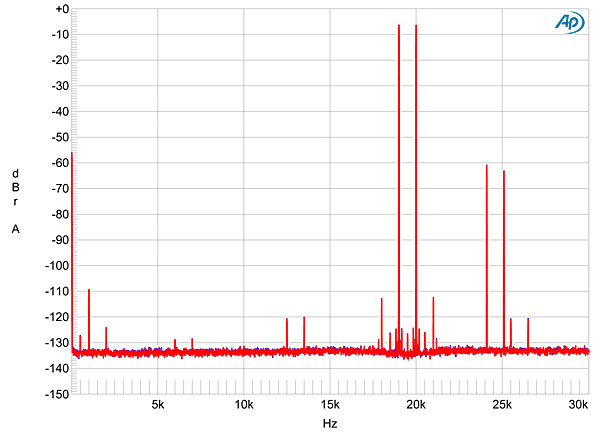
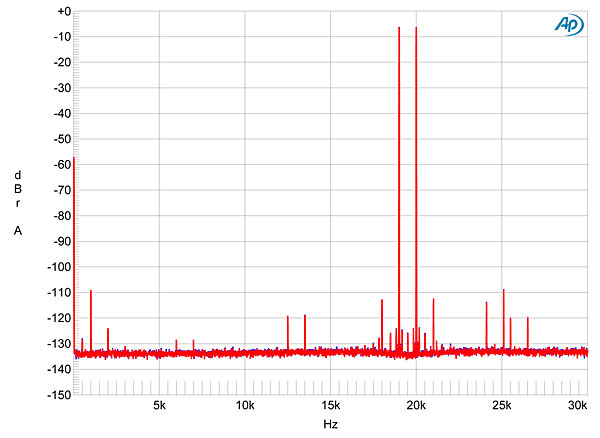
Tested for its rejection of word-clock jitter with the 16-bit J-Test signal, sourced via a TosLink optical connection, the DA-06 didn't perform as well as I might have expected. Most of the odd-order harmonics of the low-frequency, LSB-level squarewave in the processor's analog output were at the correct levels, as shown by the green line in fig.16. However, there are low-level sideband pairs at ±60 and ±168Hz. The first pair is obviously power-supply induced; the second pair is of unknown origin. The random noise floor is also higher in level than the previous tests had led me to expect. Repeating this test with 16-bit USB data gave a much cleaner-looking spectrum (fig.17), though there is now a suspicious peak at 10.126kHz—perhaps an idle tone of some kind. These sidebands were even higher in level with AES/EBU data (fig.18).
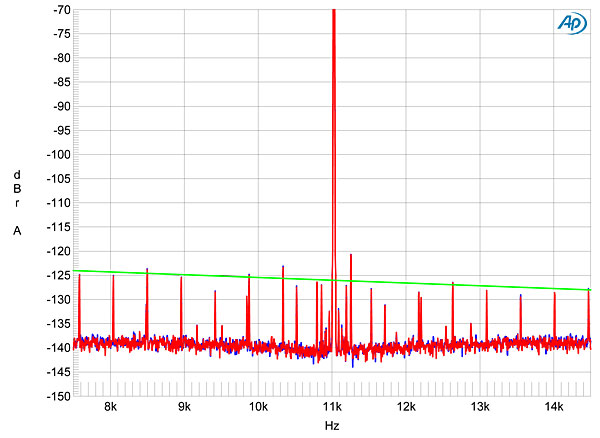
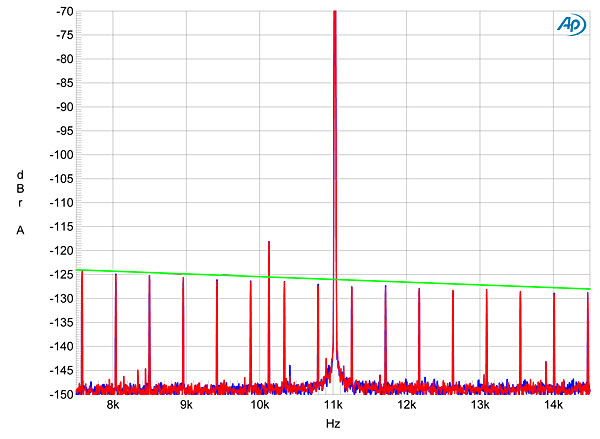
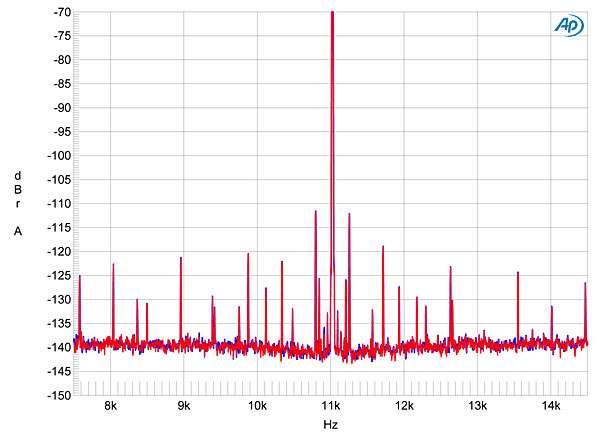
Retesting the TosLink input with 24-bit J-Test data gave the spectrum shown in fig.19. Again, the noise floor is higher than expected, and some data-related sidebands are present that shouldn't be. But the USB-derived 24-bit spectrum (fig.20) was again very clean, other than the same idle tone that was present in the 16-bit spectrum.
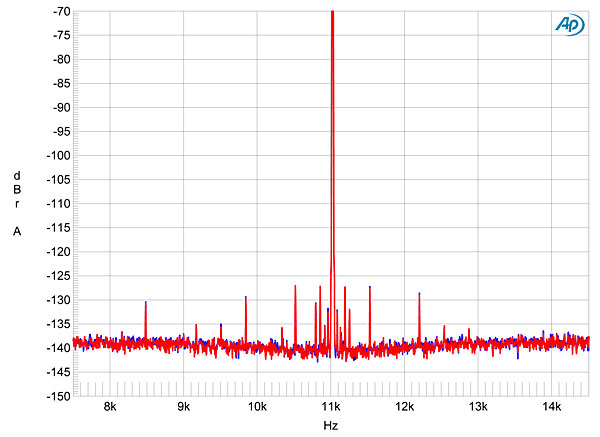
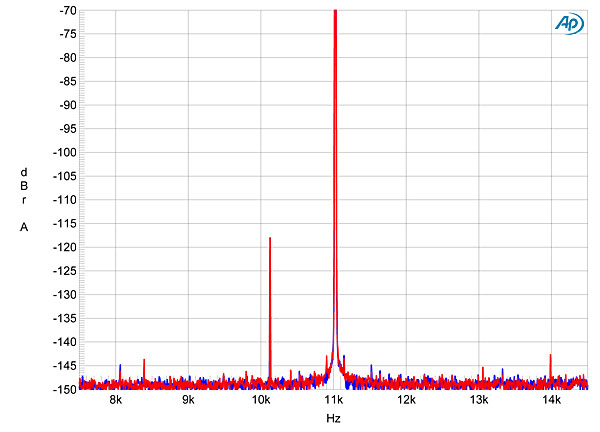
But other than the S/PDIF and AES/EBU inputs' rejection of jitter, the DA-06's measured performance is simply superb.—John Atkinson

Hi
Great review as always
just one question, you say xlr has (pin2+) but manuel says normal(pin2 -)
which one is correct?
Thank you
sincerely
Mahesh kc

Great review as always
Thank you.
just one question, you say xlr has (pin2+) but manuel says normal(pin2-) which one is correct?
My measurements clearly indicated that the XLR jacks on our sample were wired with pin 2 hot, the DAC being non-inverting when connected to the Audio Precision, which has pin 2 hot.
John Atkinson
Editor, Stereophile